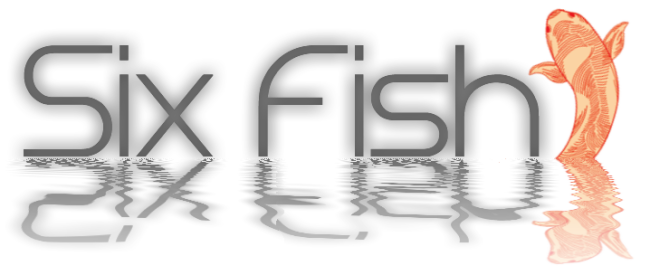Our Web Development Process
Six Fish is proficient in many modern web development methodologies, and has demonstrated the ability to scale to large projects and teams. However, we prefer to work with very small teams. In our experience, significant overhead is reduced by empowering few people to make decisions, and a kitchen with few chefs provides the most pleasing result.
Using our recent project with SIMS as an example, this is an outline of the process we use for a small project. For all steps in the process, we prefer a weekly iteration cycle. We make a weekly delivery to you. You evaluate the delivery. We discuss it and gather your feedback. Then we work in your feedback and produce the next version one week later. This cycle sometimes expands or contracts, but a weekly delivery keeps the team focused and able to predict when they are most needed.
Discovery
Our first goal is to understand your needs. We identify the key customers in your organization and ensure they are either present or represented in all key decisions. We understand your processes and offerings today and how you want your new web property to expand or enhance them. We gather your requirements into a series of short, pithy user stories that illustrate how you envision your visitors or administrators interact with your site.
Once we have the master list of ideas, we move from brainstorming to prioritizing. We rank all user stories by importance. This helps us make the hard decision of letting something go when our budget doesn't accommodate our dreams.
Our team estimates the cost of the final user stories, we agree which stories will be delivered and we move on to producing wireframes from the user stories.
Wireframes

We build wireframes with a rapid prototying tool that allows us to try out different content arrangements very quickly.
We don't wireframe the entire site. We deliver several key pages and a site map for the rest of the expected pages. The wireframe pages become a guide for developing the remaining pages.
The wireframed pages are delivered to the graphic designer assigned to the project and the developers who make the site work.
Graphic Design
 While working on the wireframes for the site, we will introduce a graphic designer who will skin the web site. The designer will help you choose fonts, colors and styling. He or she may help you with images and logos that communicate your brand.
While working on the wireframes for the site, we will introduce a graphic designer who will skin the web site. The designer will help you choose fonts, colors and styling. He or she may help you with images and logos that communicate your brand.
By the time we have finished the wireframes, the designer should know you well enough to produce some suggested directions for your look and feel.
The image at right is an artist's conception of a page on the web site.
The designer will also specify the animations on actionable features of your site. View the SIMS home page to see the effects of rolling your mouse over the surface or clicking items. These effects help to bring your site alive and delight visitors.
Development
The bulk of the project is spent in development. This is where planning moves to action. It's our preference to reach this stage as soon as possible. Experience has taught us that significant changes are often warranted during development, and no amount of pictures or drawings can really represent what it's like to visit and use a web site. For this reason, we make ample allowance for changing things as we go during the development cycle.
Developers who make the site work start with the wireframes. Developers who turn images into a web site skin start with the artist's compositions. They work primarily in parallel.
There will be a delivery each week. Each week, the site will get closer to your finished product. Each week it will have more features and a more pleasing look and feel. You will have a review opportunity each week to provide feedback into the process. Each week you will see your feedback direct the developers.
Our budget will allow for a fixed set of weekly iterations. We predict the cost of the project and delivery date during the discovery process. But most clients change priorities or see new possibilities as the site is being developed. We recognize this and respond accordingly. By making weekly deliveries and working closely together, the best possible delivery emerges.
Deployment
When the web site is finished, we go through a deployment process that moves content from your old site to the new one and executes the series of steps that launch your new site seamlessly. With a large existing web site, this can be a complex effort to migrate your users.
Support
Six Fish doesn't disappear on launch day. We are as proud as you are and equally invested in the success of your new site. In the end, passion trumps process. We've chosen to work on sites that bring out our passion. We keep coming back and we keep giving more. For the same reason you do. You care about your community, clients or members. And so do we.
